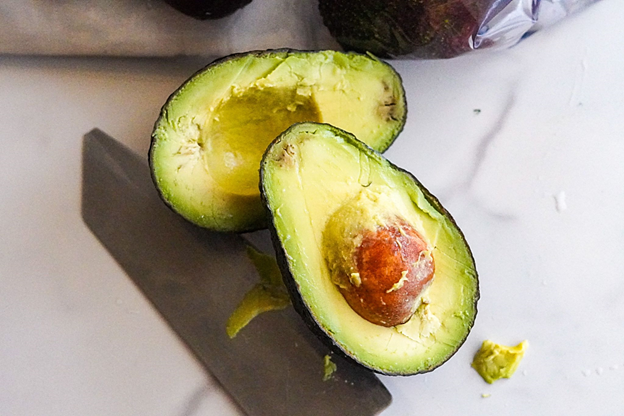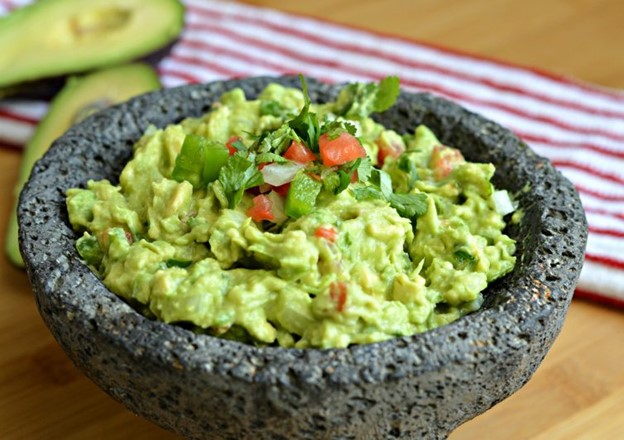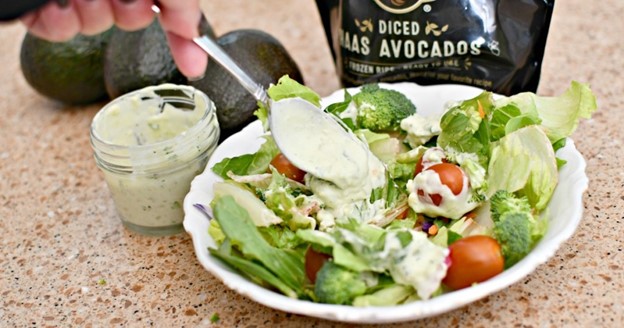Freezing Avocados—CAN You?
We all know freezing food is a smart way to avoid food waste. But not every food freezes well. Take avocados, for instance. This luscious green fruit is often part of my weekly menu, however, I end up with leftovers that need to be refrigerated.

It sure would be nice if they were in the “freeze well” category. Having frozen ripe avocado in the freezer on a regular basis would be a game-changer, don’t you think? Not to mention how much money could be saved at not having to toss over-ripe ones out!
Well, the folks at www.marthastewart.com wondered the same thing. So, to find out whether this delicious fruit holds up well in your freezer, they asked the experts. And the short answer is yes, but for this to be successful, you need to know the best way to freeze the fruit and then how to use it afterward.

First of all, not all avocados are suitable for freezing. It’s crucial that they’re fully ripe. The pros at the Institute of Culinary Education say, “Only ripe avocados should be stored in the freezer because once they are frozen, they won't continue to ripen—even when thawed.”
Also, it’s important to know that whole avocados become mushy after freezing and thawing. The experts from the Hass Avocado Board say that for best results, cut the avocado into slices or cubes before freezing. [My thought on that advice: OK! Mushiness is no big deal—mushy avocados work great in guacamole!]

The Hass Avocado Board folks also say that you can freeze slices as well, and they’ll last up to a month when stored this way. Here’s what they recommend as the best way to freeze either cubes or slices:
Another important step is to remove all the air from the bag before sealing; any excess air will cause avocado to brown quickly.

Then there’s mashed avocado. Pre-mashed avocado tends to blend more easily, but just know it’ll brown quicker than cubes or slices. It also will last a month in the freezer. To freeze it mashed, the Board recommends:
SO, how do you use frozen avocado (besides my aforementioned guacamole, where the resultant mushiness is no problem)? Milkshakes, smoothies, hummus, and salad dressings are some excellent choices. These uses would highly benefit from the avocado’s extra creaminess and healthy fats. It can also be added to chilled soups or brownie batter.
Ideally, frozen avocado should be used straight from the freezer. It takes about one hour to thaw at room temperature.

I’ll close with a frozen-avocado-salad-dressing idea I found online (www.hip2keto.com). Lina, the site’s recipe creator, says to blend a few pieces of defrosted avocado with ranch dressing using a blender. Add some fresh cilantro and a little lime juice and enjoy the sparkle this dressing adds to your salad.
[NOTE: While we can actually buy frozen avocado at the grocery store, but it’s very expensive. So, it makes good sense to know how to freeze it yourself.)

It sure would be nice if they were in the “freeze well” category. Having frozen ripe avocado in the freezer on a regular basis would be a game-changer, don’t you think? Not to mention how much money could be saved at not having to toss over-ripe ones out!
Well, the folks at www.marthastewart.com wondered the same thing. So, to find out whether this delicious fruit holds up well in your freezer, they asked the experts. And the short answer is yes, but for this to be successful, you need to know the best way to freeze the fruit and then how to use it afterward.

First of all, not all avocados are suitable for freezing. It’s crucial that they’re fully ripe. The pros at the Institute of Culinary Education say, “Only ripe avocados should be stored in the freezer because once they are frozen, they won't continue to ripen—even when thawed.”
Also, it’s important to know that whole avocados become mushy after freezing and thawing. The experts from the Hass Avocado Board say that for best results, cut the avocado into slices or cubes before freezing. [My thought on that advice: OK! Mushiness is no big deal—mushy avocados work great in guacamole!]

The Hass Avocado Board folks also say that you can freeze slices as well, and they’ll last up to a month when stored this way. Here’s what they recommend as the best way to freeze either cubes or slices:
- Cut the avocado in half and remove pit by gently working a spoon underneath it.
- Peel off skin, cut avocado flesh into slices or cubes as desired.
- Gently brush slices or cubes with a little lime or lemon juice to help prevent browning.
- Place avocado in a resealable plastic or silicone bag, and push out all air.
- Tightly seal the bag and place it in the freezer.
Another important step is to remove all the air from the bag before sealing; any excess air will cause avocado to brown quickly.

Then there’s mashed avocado. Pre-mashed avocado tends to blend more easily, but just know it’ll brown quicker than cubes or slices. It also will last a month in the freezer. To freeze it mashed, the Board recommends:
- Peel, scoop, and mash avocado,
- Mix in a little lime or lemon juice to help prevent browning.
- Scoop mashed avocado into an ice cube tray (with a cover, if possible) and place it in freezer.
- When avocado cubes are frozen, add to a freezer-safe bag, carefully remove any air, and return it to freezer.
SO, how do you use frozen avocado (besides my aforementioned guacamole, where the resultant mushiness is no problem)? Milkshakes, smoothies, hummus, and salad dressings are some excellent choices. These uses would highly benefit from the avocado’s extra creaminess and healthy fats. It can also be added to chilled soups or brownie batter.
Ideally, frozen avocado should be used straight from the freezer. It takes about one hour to thaw at room temperature.

I’ll close with a frozen-avocado-salad-dressing idea I found online (www.hip2keto.com). Lina, the site’s recipe creator, says to blend a few pieces of defrosted avocado with ranch dressing using a blender. Add some fresh cilantro and a little lime juice and enjoy the sparkle this dressing adds to your salad.
[NOTE: While we can actually buy frozen avocado at the grocery store, but it’s very expensive. So, it makes good sense to know how to freeze it yourself.)
 Alice Osborne
Alice Osborne
Weekly Newsletter Contributor since 2006
Email the author! alice@dvo.com
